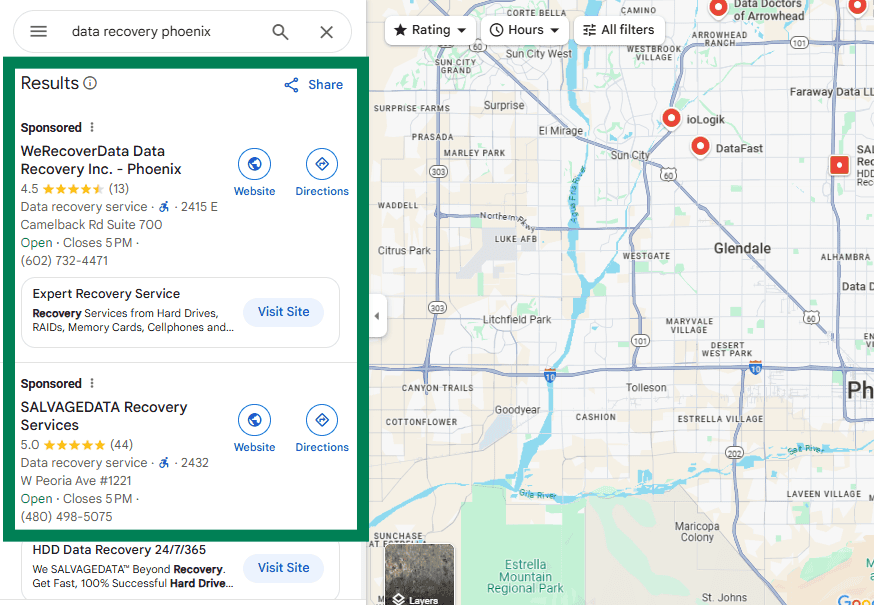Apple is reportedly considering a major expansion of its advertising business by introducing paid search ads in Apple Maps. According to Bloomberg, the tech giant is exploring a model that mirrors Google Maps, where businesses pay for prominence in search results. If implemented, this change could reshape how users interact with Apple Maps while providing businesses with a powerful new marketing avenue.
A New Frontier for Apple’s Advertising Ambitions
Apple’s potential move into Maps advertising aligns with its broader strategy to grow its services revenue. In recent years, Apple has increasingly focused on monetizing its ecosystem through services like the App Store, Apple News, and Apple TV+. In 2023 alone, Apple’s services division brought in over $85 billion, a significant portion of which came from advertising. Adding ads to Apple Maps could further bolster these earnings while creating fresh opportunities for local businesses to connect with potential customers.
How the Ads Might Work

If Apple follows Google’s model, businesses might pay for sponsored placements that appear when users search for specific categories like “coffee shops near me” or “best pizza restaurants.” These promoted results would likely blend into the Maps interface, offering users relevant suggestions while giving advertisers measurable exposure. Google Maps has successfully implemented similar strategies for years, generating billions of dollars annually from local search ads.
Balancing Ads with Privacy
While Apple is eyeing more advertising opportunities, it remains committed to its privacy-first stance. The company has consistently differentiated itself from competitors by limiting user tracking and introducing features like App Tracking Transparency (ATT). Any potential advertising rollout in Maps would likely adhere to these privacy principles, ensuring user location data isn’t exploited for targeted marketing without consent.
Potential Impact on Users
The introduction of ads in Maps could significantly impact how users navigate their surroundings. On one hand, businesses might appreciate the visibility and direct connection with potential customers. On the other hand, some users might find these ads intrusive, especially if they disrupt the app’s streamlined interface. Apple will need to strike a careful balance to avoid alienating its loyal user base.
A Growing Trend in Digital Navigation
Apple isn’t the only player exploring innovative ad models in digital mapping services. Google Maps, with more than 1 billion monthly active users, has long leveraged location-based ads to help businesses attract foot traffic. Waze, another Google-owned navigation app, also integrates branded pins and location-specific promotions. As competition intensifies, Apple’s move into this space could increase pressure on competitors while giving businesses another viable advertising platform.
What This Means for Businesses
If Apple Maps introduces paid search ads, local businesses could gain a significant advantage. For small and medium-sized enterprises (SMEs), this presents a cost-effective way to reach nearby customers in real time. Restaurants, retail stores, and service providers could benefit from enhanced visibility, particularly in densely populated or tourist-heavy areas.
Looking Ahead
While Apple hasn’t officially confirmed these plans, industry analysts suggest this move is part of a broader push to diversify the company’s revenue streams beyond hardware sales. As the digital advertising landscape evolves, Apple Maps could become a key player in location-based marketing—potentially giving Google Maps its first serious challenger in years.
Apple’s success in this space will depend on its ability to integrate ads without compromising the user experience. If done right, Apple Maps could transform into a dynamic tool that not only helps users find locations but also introduces them to relevant businesses in their vicinity.
Key Takeaways
- Apple plans to introduce paid search advertising in Maps to boost revenue
- Businesses will be able to pay for increased visibility in search results
- The new advertising model will follow Google Maps’ proven approach
Apple’s New Advertising Strategy for Apple Maps
Apple plans to integrate paid advertising into its Maps application, allowing businesses to gain enhanced visibility through sponsored search results – a move that mirrors Google’s successful advertising model.
Comparison With Google Maps’ Ad Platform
Google Maps already generates substantial revenue through its business advertising system. Businesses pay to appear at the top of search results with a prominent “Ad” label.
Apple’s planned advertising system will likely follow a similar model to Google Maps. Businesses can bid for top placement when users search for specific categories or services.
Key differences between the platforms:
- Apple Maps has a smaller user base but higher iOS device engagement
- Google Maps offers more advanced ad targeting options
- Apple’s system will emphasize privacy-focused advertising
Potential Impact on Search Results and User Experience
The introduction of ads will change how users discover businesses in Apple Maps. Sponsored listings will appear at the top of search results, marked clearly as advertisements.
Users may notice:
- Promoted business listings in prime positions
- Sponsored pins on the map
- Enhanced business profiles for advertisers
The ad system aims to help businesses increase their visibility while maintaining relevant search results for users. Small businesses could benefit from reaching local customers more effectively.
Privacy Considerations in Map-based Advertising
Apple’s commitment to user privacy shapes its advertising approach. The company uses on-device processing and aggregated data to protect user information.
The advertising system will incorporate:
- Anonymous user data collection
- Limited location tracking
- Opt-out options for personalized ads
Business targeting options will focus on location and search terms rather than personal user data. This maintains Apple’s privacy-first stance while creating new revenue opportunities.
Frequently Asked Questions
Apple’s potential introduction of advertisements in Maps raises questions about user experience, privacy implications, and business opportunities for advertisers in the location-based services market.
How might the introduction of an ad platform impact user experience on Apple Maps?
The ad platform would display sponsored business listings at the top of search results, marked clearly as advertisements. Users would still see organic search results below the sponsored content.
Local businesses could pay to appear more prominently when users search for relevant categories or services in their area.
What are Apple’s objectives in potentially developing a new ad platform for its mapping service?
Apple aims to expand its advertising revenue streams beyond the App Store and News app. The company sees location-based advertising as a significant market opportunity.
This move aligns with Apple’s recent push into sports content and its broader strategy to grow services revenue.
Could the implementation of advertisements in Apple Maps present privacy concerns for users?
Apple would need to balance advertising capabilities with its strong privacy stance. The company’s existing privacy protection measures would likely extend to any advertising platform.
Location data handling and user tracking would require strict privacy controls to maintain user trust.
In what ways could the advertising model for Apple Maps differ from the approach used by Google Maps?
Apple Maps ads would likely focus on local business promotion through sponsored pins and search results. The system would mark sponsored content clearly to distinguish it from organic results.
The platform could offer a more privacy-focused alternative to Google’s extensive data collection practices.
What potential benefits might advertisers expect from using a new ad platform on Apple Maps?
Advertisers would gain access to Apple’s user base and location-based targeting capabilities. Local businesses could reach potential customers actively searching in their area.
The platform would provide an alternative to Google’s local search advertising dominance.
How could Apple ensure that its ad platform remains in compliance with data protection regulations?
Apple would implement privacy-preserving advertising techniques consistent with global data protection standards. The company would likely minimize data collection and avoid cross-app tracking.
User consent mechanisms and transparent privacy controls would be essential components of the platform.







